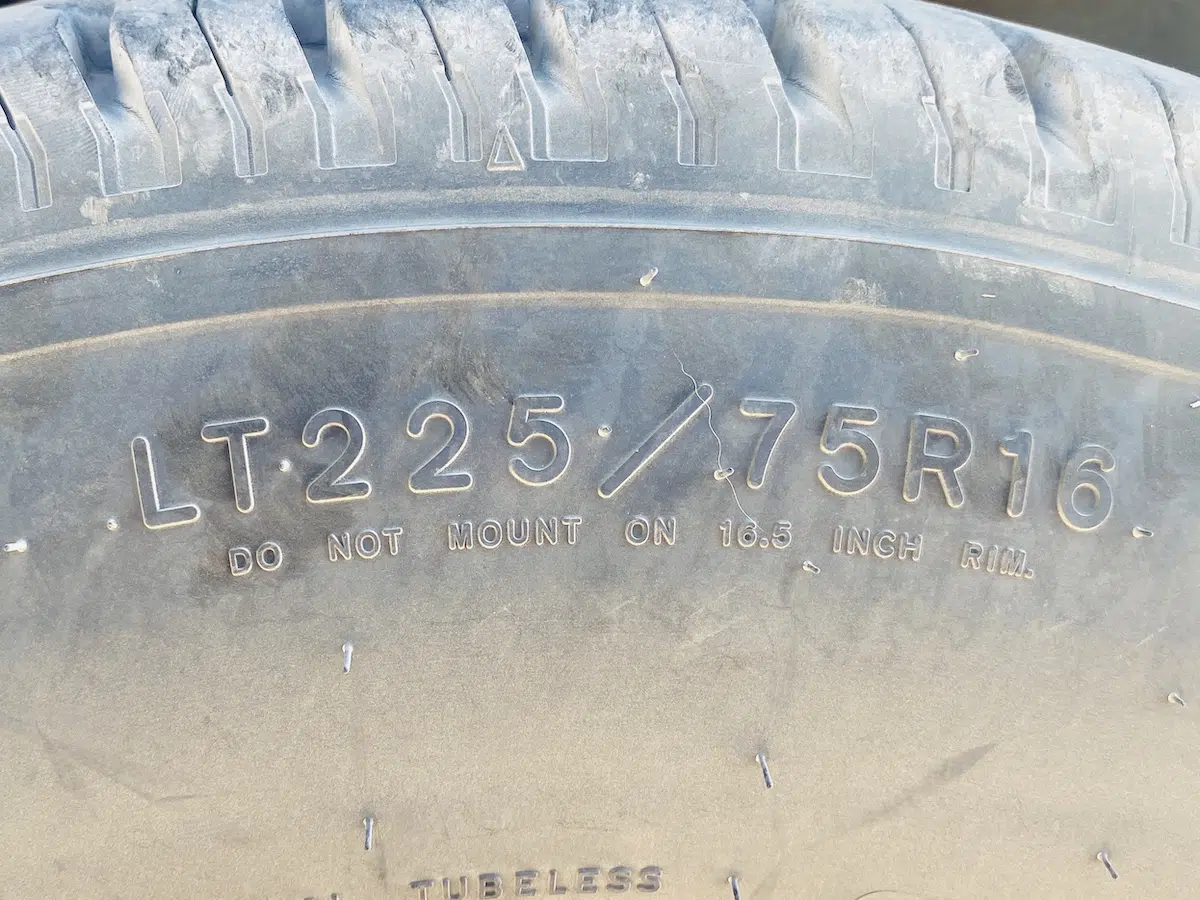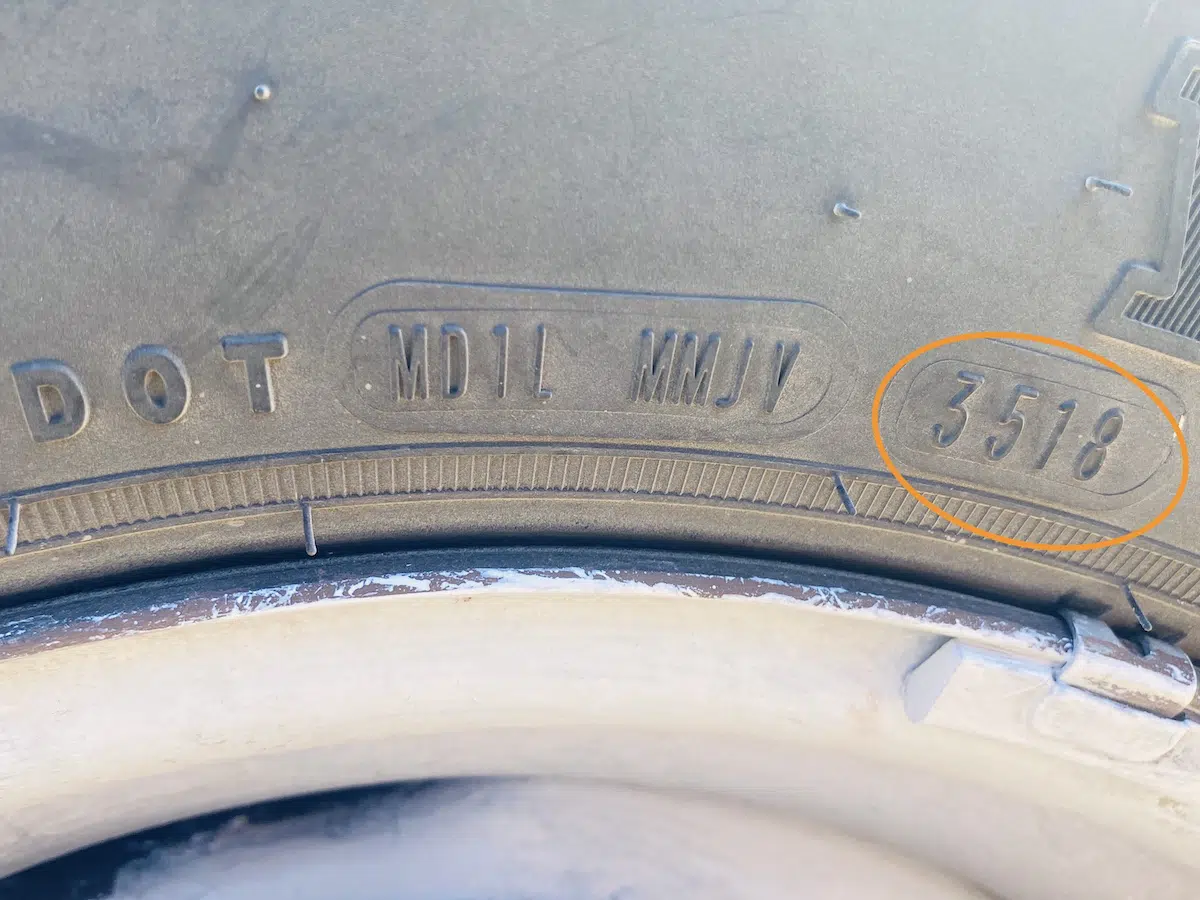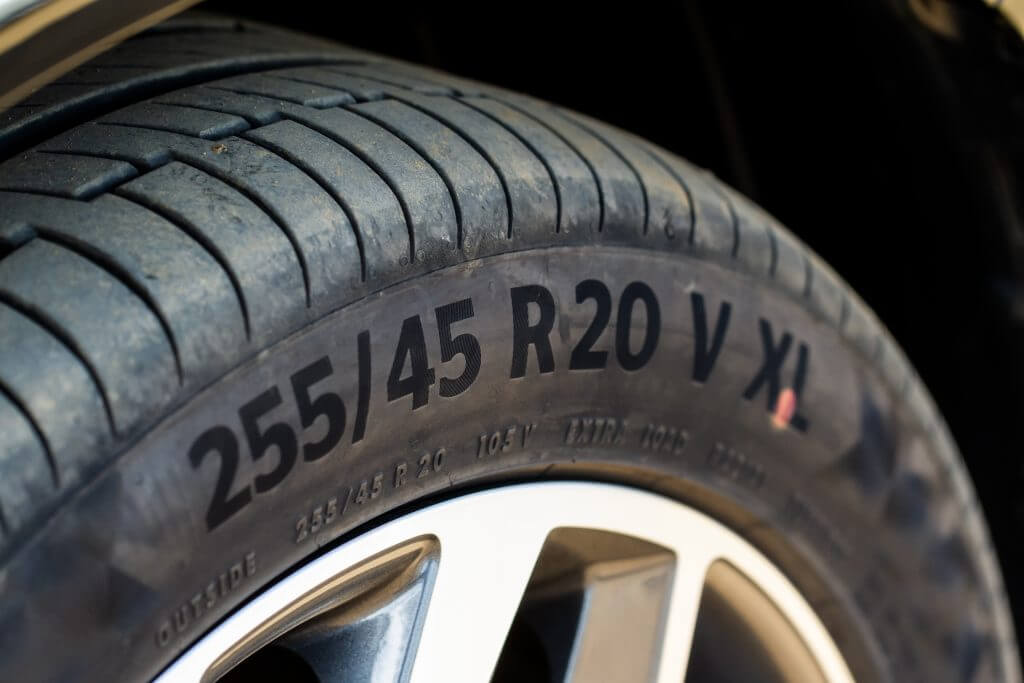From normal-sized passenger car tires to oversized tires found trail-ready off-road SUVs, all tires have specific information printed on the sidewall of the tire. Knowing where to find this information (and deciphering what it all means) will be helpful when it comes time to replace your old tires or upgrade to better tires. Keep reading to learn all about the information printed on your tires and how to tell tire size.

How to Tell Tire Size
There is a lot of information displayed on the sidewall of your tires, but if you’re needing to know the size of your tires, that’s usually displayed in something that looks like this: P225/75R16 or LT33x12.50R17. These numbers and letters provide a lot of information about the tire, including:
- First Letter: The first letter in the sequence indicates the proper use of the tire. A tire that has a “P” designation is meant for a passenger vehicle, whereas one with an “LT” designation is suitable for a light truck.
- First number: The number that comes after the tire type designation depends on what type of tire your car has. Most will have the first example, which is the width of the tire in millimeters from one sidewall to the other. Most trucks and off-road vehicles will have a tire size shown In the second example, which is the diameter of the tire in inches.
- Second number: Again, most passenger vehicles will have tire sizes shown as the first example, and in this case, the second number is called the ratio of the height of the tire’s sidewall compared to its overall width. The number “70” in the example above means that the height of the sidewall is equal to 70% of the tire width. In the second example, the number represents the width of the tire in inches.
- Construction: The letter “R” tells you that the tire has a radial structure. In this case, the tire’s cord layers are arranged radially, which means at a 90-degree angle to its rolling direction. A “B” designation stands for bias construction, meaning the layers run diagonally.
- Rim diameter: This is the diameter of the rim in inches. So, the number “16” indicates that the tire fits a wheel that’s 16 inches in diameter. Common diameter sizes these days range from 17 to 20 inches.

Other Tire Data
- Load index: The load index represents the tire’s load-carrying capacity. Most passenger vehicles have a load index of 75 to 100, but some are able to carry more.
- Speed rating: The speed rating denotes the tire’s maximum service speed. An “S” rating means that the tire can withstand a maximum speed of 112 mph.
- DOT code: This is group of up to 12 letters and numbers revealing information such as the tire manufacturer as well as various details about the tire. The last four digits of the DOT code represent the production date in weeks and years. For example, a build code of 3518 indicates that the tire was manufactured in the 35th week of 2018.
- Treadwear: This number indicates how quickly a tire will wear out. Softer rubber (such as performance tires) are generally rated at less than 100, so a tire with a treadwear of 50 will wear out twice as fast as the control tire. Conversely, a treadwear rating of 200 indicates the tire tread will take twice as long to wear out.
- Traction: The traction rating shows how well a tire is expected to stop on wet pavement. These ratings vary from AA, A, B, and C.
- Temperature: Temperature plays a huge role in the lifespan of a tire, and this rating (A, B, or C) indicates the tire’s resistance to heat. A is the highest, C is the lowest.
By referring to these specifications, you’ll know the exact type and size of tires your vehicle needs to deliver the perfect blend of performance, efficiency, and safety. Besides the tire sidewalls, you can also find this tire data at other locations in and around your vehicle such as inside the glove box door, on the driver’s side door jamb, or your trusty owner’s manual.
Is It Safe to Drive with Incorrectly Sized Tires?
When it’s time to replace your tires, it’s essential to choose a tire size that perfectly fits your vehicle. Driving with the wrong tires can increase your chances of getting into an accident. For example, overly wide or narrow tires can affect your car’s center of gravity, making it more unstable and difficult to control. This is especially dangerous when you’re driving in wet or slippery conditions. Apart from jeopardizing your safety, incorrectly sized tires can also cause damage to other parts of your vehicle, such as the wheel wells and suspension system.
The average cost of replacing a set of tires ranges from $452 to $4,180, depending on the type of vehicle you own. Replacing tires is an easy task that you can complete in less than an hour. If you only want to find out the correct tire size for your car, it shouldn’t take more than a minute.
When to Replace Your Tires?
Usually, modern tires are capable of lasting from 25,000 to 80,000 miles. The ideal tire replacement interval for your vehicle depends on a variety of factors, including your car make and model, driving habits, and driving environment. If you often practice hard acceleration and braking or drive on ill-conditioned roads, it’s recommended that you change your tires at a shorter interval.
What Are Common Symptoms Indicating You Need to Replace Your Tires?
The following are some signs suggesting that it may be time to get a new set of tires:
- Tire pressure falling more quickly than usual
- Low tire tread depth
- Uneven tire tread wear
- Weird or excessive vibration or noise
- Bubbles on the sides or treads
- Cracked rubber
Keep in Mind
The process of replacing tires may differ from one vehicle to another. If you’re unsure how it should be done on your vehicle, the best thing to do is to follow the instructions in your owner’s manual. The manual also contains the recommended schedule for changing your tires. Alternatively, you can use the FIXD app to find out the ideal tire replacement interval for your specific vehicle.
Once you’ve replaced your tires, you should go to an auto service facility for tire balancing and wheel alignment. You may also want to have your tire-pressure monitoring system inspected or replaced if your car has this feature.

Lifelong automotive enthusiast with a soft spot for offroading. Wrencher turned writer, but I still love to tinker on just about anything with an engine. Dream car: tie between a ‘71 Hemi ‘Cuda and a ’91 GMC Syclone. #GirlDad #SaveTheManuals














